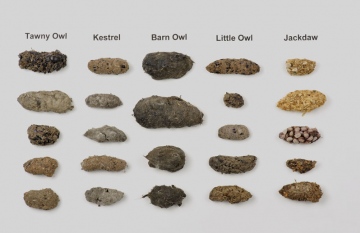Sightings and news for the Naturewatch group of Great and Little Abington in Cambridgeshire, UK. See below for more details and information on how to join.
Monday, 29 July 2019
Ruddy Darter
Saturday, 27 July 2019
Toadstool eruption from old tree stump
A few moths - so far unidentified!
Jackdaw 'pellet'
After some investigation, it seems that some corvids, and particularly Jackdaw, also produce 'pellets' and those produced by Jackdaw can be somewhat pale and contain indigestible plant and seed matter. Mystery solved - but sadly no owls!
Butterflies around the village
Small Skipper (Granta Park)
News. Common Tern reported in Abingtons for first time
Andy M was at home first thing this morning, watching the rain out of the window, when he noticed the unmistakable silhouette of a medium sized tern flying quite low over his garden, heading east.
Its size, the narrow pointed wings, long tail streamers and dainty flight made it likely this was either a Common or Arctic Tern, and given the location and time of year, this was undoubtedly an adult Common Tern.
Derek indicated that this species has not been reported by ANW in the Abingtons before.
Thursday, 25 July 2019
Devil's Coach Horse Beetle
Saturday, 20 July 2019
Big Butterfly Count
Wednesday, 17 July 2019
Lepidoptera on Granta Park
Foxes in Sluice Woods
Marsh Orchid and insects in Church Lane garden
Emergence of a Southern Hawker dragonfly
Not something you get to see every day!
Tuesday, 16 July 2019
Broad-bodied Chaser and Black-tailed Skimmer dragonflies
Thursday, 11 July 2019
Dragonfly larval skins identified
News. First Small Copper butterfly seen this year
Derek T reported seeing a Small Copper butterfly in his garden today, the first seen this year.
Whilst fairly common and widespread on open rough chalky ground, Small Copper butterflies are generally only seen in small numbers, as the males are fiercely territorial. With it's distinctive orange and brown upperwing, and numerous black spots, the Small Copper is quite distinctive.
https://butterfly-conservation.org/butterflies/small-copper
Thursday, 4 July 2019
June 2019. Interesting Sightings around The Abingtons
Wednesday, 3 July 2019
News. First Gatekeeper butterfly of the year
Derek T reported seeing a Gatekeeper butterfly in his garden earlier today - the first record in The Abingtons this year.
Sparrowhawk with prey
Monday, 1 July 2019
Butterflies - Ringlets, Marbled White and others
The Aims of Abington Naturewatch
At their meeting on 9 April 2005 the members approved this revised version of the aims of Abington Naturewatch:
- To monitor and record the wildlife (fauna & flora) within the borders of the Abingtons;
- To encourage protection of our wildlife, maintain its quality and foster its diversity;
- To promote awareness of the richness, potential and problems of the natural environment of the Abingtons;
- To cooperate in improving access to the local natural environment for the benefit of all Abington villagers.
The organisation is informal and communication is by email if possible; members are notified of events from time to time. Contact details are maintained by a small "project team". There is currently no membership fee as costs are covered by voluntary contributions at events.
Members are encouraged to report notable sightings of flora and fauna within the Abingtons to the appropriate sector coordinator and an illustrated record is published annually.
A map of the area covered, with some features noted, is available here: http://maps.google.co.uk/maps/ms?ie=UTF8&hl=en&msa=0&msid=213774935674882866424.00000111dca2be9f06ab8&z=13>
For more information or to join, please contact David Farrant on (01223) 892871.
Contributions to our records should be sent to sector contacts or either of the above. Photographs may also be submitted to Andy Merryweather (amerryweather61@gmail.com)




















































